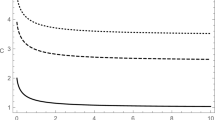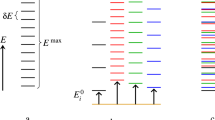
Overview
- Offers a self-contained, yet comprehensive, introduction to quantum gravitation based on the traditional, well tested covariant approach that forms the basis for a modern treatment of gauge theories
- Stresses the basic physical ideas, and developing simple examples and exploiting analogies where suitable
- Avoids so-called loop gravity and spin foam models, which break general covariance explicitly and provide no insight on how and why it should be restored
- Includes supplementary material: sn.pub/extras
Access this book
Tax calculation will be finalised at checkout
Other ways to access
About this book
The book covers the theory of Quantum Gravitation from the point of view of Feynman path integrals. These provide a manifestly covariant approach in which fundamental quantum aspects of the theory such as radiative corrections and the renormalization group can be systematically and consistently addressed. The path integral method is suitable for both perturbative as well as non-perturbative studies, and is known to already provide a framework of choice for the theoretical investigation of non-abelian gauge theories, the basis for three of the four known fundamental forces in nature. The book thus provides a coherent outline of the present status of the theory gravity based on Feynman’s formulation, with an emphasis on quantitative results.
Topics are organized in such a way that the correspondence to similar methods and results in modern gauge theories becomes apparent. Covariant perturbation theory are developed using the full machinery of Feynman rules, gauge fixing, background methods and ghosts. The renormalization group for gravity and the existence of non-trivial ultraviolet fixed points are investigated, stressing a close correspondence with well understood statistical field theory models.
Later the lattice formulation of gravity is presented as an essential tool towards an understanding of key features of the non-perturbative vacuum. The book ends with a discussion of contemporary issues in quantum cosmology such as scale dependent gravitational constants and quantum effects in the early universe.
Similar content being viewed by others
Keywords
Table of contents (9 chapters)
-
Front Matter
-
Back Matter
Reviews
From the reviews:
“The book of Hamber covers key aspects and open issues related to a consistent regularized formulation of quantum gravity with the aid of the covariant Feynman path integral quantization. … The book is oriented on the physicists interested in quantum gravity. It will be useful both for the first acquaintance with the specific features of the Feynman path integrals in gravity and for those who are already working with such integrals … .” (Michael B. Mensky, Zentralblatt MATH, Vol. 1171, 2009)
“This work covers all the important aspects of the subject and points the reader in the direction of open problems in the field of quantum theory of gravity. … The book is very well written … . This book will be a great reference tool for researchers working in the field of quantum gravity as well as for graduate students, with basic knowledge of classical gravitational theory and quantum field theory, who wish to learn about quantum gravity and lattice methods.” (Guglielmo Fucci, Mathematical Reviews, Issue 2011 e)
Editors and Affiliations
About the editor
Accessibility Information
Bibliographic Information
Book Title: Quantum Gravitation
Book Subtitle: The Feynman Path Integral Approach
Editors: Herbert W. Hamber
DOI: https://doi.org/10.1007/978-3-540-85293-3
Publisher: Springer Berlin, Heidelberg
eBook Packages: Physics and Astronomy, Physics and Astronomy (R0)
Copyright Information: Springer-Verlag Berlin Heidelberg 2009
Hardcover ISBN: 978-3-540-85292-6Published: 04 November 2008
Softcover ISBN: 978-3-642-09900-7Published: 10 November 2010
eBook ISBN: 978-3-540-85293-3Published: 20 October 2008
Edition Number: 1
Number of Pages: XVIII, 342
Number of Illustrations: 60 b/w illustrations
Topics: Elementary Particles, Quantum Field Theory, Astronomy, Astrophysics and Cosmology, Quantum Physics



